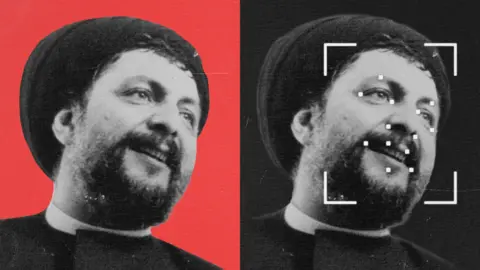Warning: Contains images some may find upsetting
A computer scientist at Bradford University is studying a digitized photo of a corpse from a secret mortuary in Libya as part of an investigation into the mysterious 1978 disappearance of religious leader Musa al-Sadr. The body was seen and photographed in 2011, raising hopes that it may belong to al-Sadr, whose fate has fueled numerous conspiracy theories over the decades.
The disappearance of al-Sadr parallels the intrigue surrounding major historical figures, creating a mythos that has captured the imagination of many. His followers revere him not only for his political advocacy on behalf of Lebanon's Shia Muslims but also for the sacred narratives that surround his mysterious fate.
The photo obtained by journalist Kassem Hamadé showed a tall body which could match al-Sadr’s height. A specialized facial recognition algorithm compares this photo to images of al-Sadr, revealing a 'high probability' of a match, prompting further investigation.
The investigation encounters significant challenges due to the sensitivities surrounding al-Sadr's legacy and the political climate in Libya. The handling of the body and the evidence has prompted intense scrutiny and administration involvement, adding obstacles to definitively identifying the remained body.
Despite conflicting claims from various parties regarding al-Sadr's fate, the belief in his survival persists among his followers. The outcome of this investigation could not only reshape the narrative surrounding the revered cleric but also impact the current socio-political dynamics in the region.

















